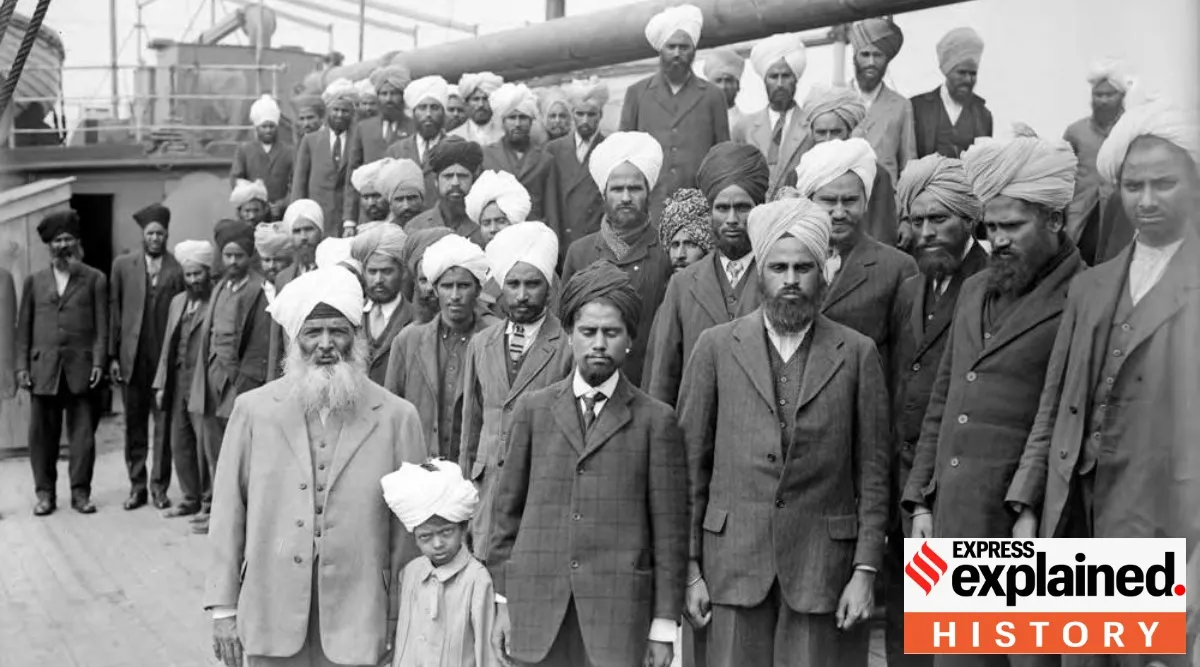Canadian Prime Minister Justin Trudeau said on Friday (September 22) that his government had shared with India evidence of “credible allegations” of the involvement of Indian agents in the assassination of pro-Khalistan leader Hardeep Singh Nijjar there several weeks ago.
A diplomatic impasse has broken out between Canada and India on Tuesday (September 19) after Trudeau alleged a “potential link” between the Indian government and the murder of Nijjar in Canada earlier this year. In response, New Delhi accused Ottawa of harboring “Khalistani terrorists and extremists”.
The fallout has once again put the Sikh diaspora in Canada in the spotlight. According to the 2021 Canadian census, Sikhs represent 2.1% of the country’s population. Additionally, Canada is home to the largest Sikh population outside of India.
These figures are not a surprise, however. For over a century, Sikhs have been migrating to Canada. Why did Sikhs start settling in Canada? Who were the first Sikhs to arrive in the country? What challenges do they face?
The arrival
Sikhs began emigrating abroad in the late 19th century while involved in the armed forces of the British Empire, said Gurharpal Singh, professor emeritus at the School of Oriental and African Studies at the University of London. The New Yorker magazines.
“Wherever the Empire expanded, including the Far East (China, Singapore, Fiji and Malaysia) and East Africa, that’s where the Sikhs went,” Singh said.
The arrival of Sikhs in Canada began with Queen Victoria’s Diamond Jubilee in 1897. Kesur Singh, a Major Risaldar in the British Indian Army (25th Cavalry, Frontier Force), is considered the first Sikh settler coming to the country that year. He was among the first group of Sikh soldiers to arrive in Vancouver as part of the Hong Kong Regiment, which included Chinese and Japanese soldiers en route to celebrate the jubilee.
The first wave of Sikh migration to Canada, however, began in the early 1900s. Most Sikh migrants immigrated to the country as laborers, working in logging in British Columbia and manufacturing in Ontario.
“The initial immigration was small, just over 5,000 people, and made up of men looking for work abroad but not intending to settle. Immigrants were classic travelers, determined to stay only three to five years and bring home as much of their savings as possible,” according to the “Encyclopedia of Diasporas: Immigrant and Refugee Cultures Around the World,” edited by Melvin Ember. , Carol R Ember and Ian Skoggard.
The repression
Although migrants found work easily, they encountered hostility based on the perception that they were taking jobs away from localities. Additionally, Sikhs also faced racial and cultural prejudice. The situation continued to deteriorate as more and more Sikhs arrived in the country.
Facing growing public pressure, the Canadian government eventually put an end to migration by introducing strict regulations. It required Asian immigrants to possess a “sum of $200, considered sufficiently large to serve as a distinguishing mark, and to arrive in Canada only by means of continuous travel from their country of origin,” writes Nalini Kant Jha in his article. , “The Indian Diaspora in Canada: Looking Back and Forward” (India Quarterly, January-March 2005, vol 61).
As a result, Indian immigration to Canada declined significantly after 1908, from 2,500 in 1907-08 to only a few dozen per year, she added.
It was at this time that Komagata Maru the incident took place. In 1914, a Japanese steamship, known as Komagata Maru, reached the shores of Vancouver. It was carrying 376 South Asian passengers, most of whom were Sikhs. The immigrants were held on the ship for approximately two months, then escorted out of Canadian waters and returned to Asia.
According to the Canadian Museum for Human Rights, once the ship arrived in India, an altercation broke out between British authorities and the passengers. At the end of the altercation, “22 people were dead, including 16 passengers,” the press release added.
The turnaround
Canadian immigration policy was relaxed after the end of World War II. This happened for three main reasons.
First, it became difficult for Canada to maintain immigration policy and practices based on racial preferences after its membership in the United Nations and its declaration to combat racial discrimination, as well as its membership in a multiracial Commonwealth of partners equal, according to Jha.
Second, after the Second World War, Canada began to develop its economy for which it needed workers.
Third, there was “a decline in immigration of people from Europe and the Canadian government turned to third world countries for ‘import of human capital'”, Paramjit S Judge, Professor and head of the sociology department at Guru Nanak Dev. from the University of Amritsar, wrote in his 2003 article, “Social Construction of Identity in a Multicultural State: Sikhs in Canada,” published in the Economic and political weekly.
These factors ultimately led to the introduction of the “points system” in 1967 by the Canadian government which made competence alone a criterion for admitting non-dependent parents into the country and eliminated any preference given to a particular race.

“Unapologetic travel lover. Friendly web nerd. Typical creator. Lifelong bacon fanatic. Devoted food enthusiast. Wannabe tv maven.”


:strip_icc():format(jpeg)/kly-media-production/medias/4889148/original/004013400_1720683504-firman_1.jpg)




